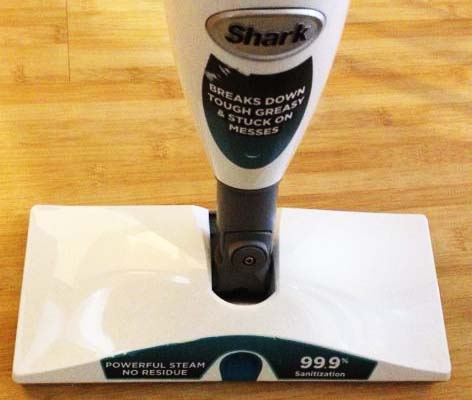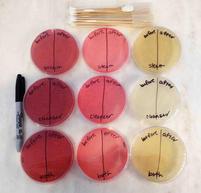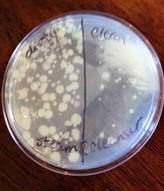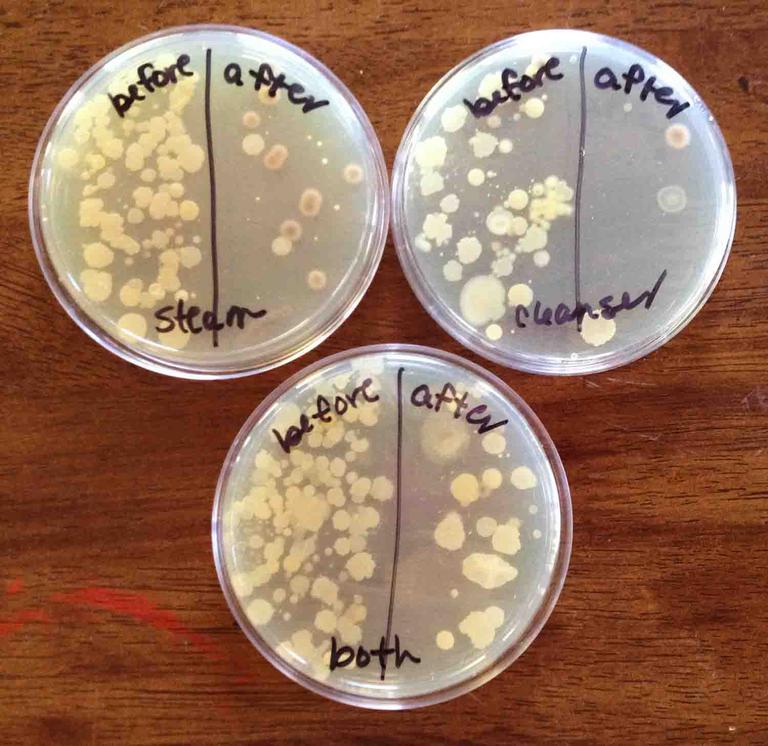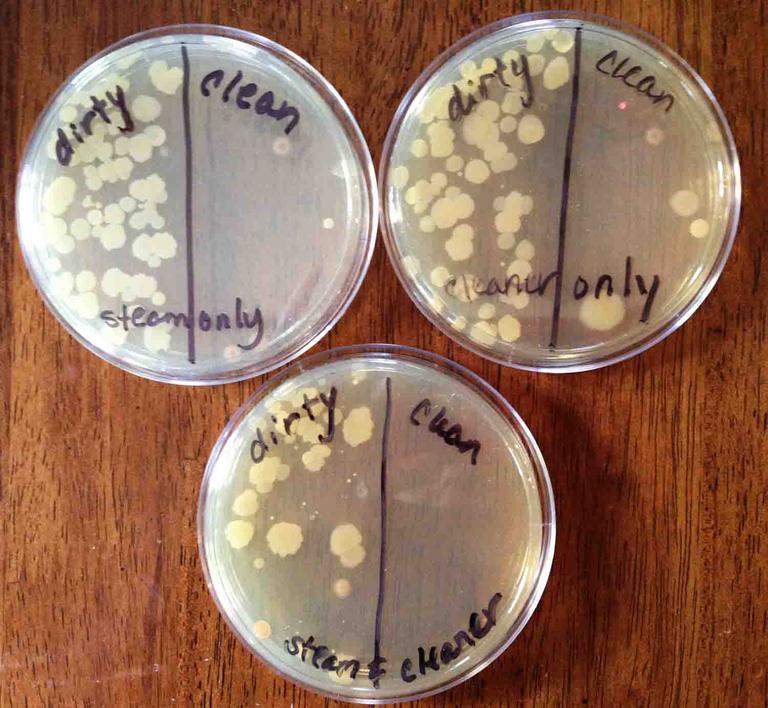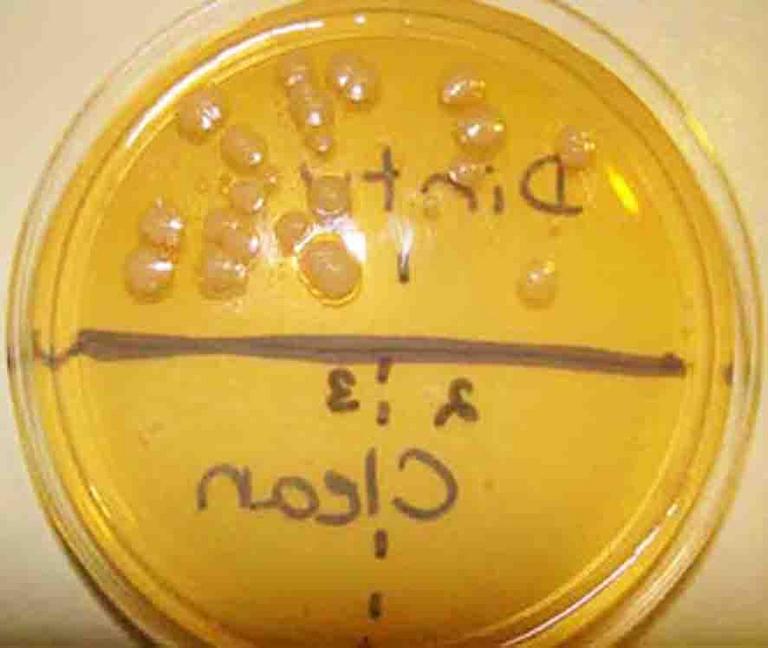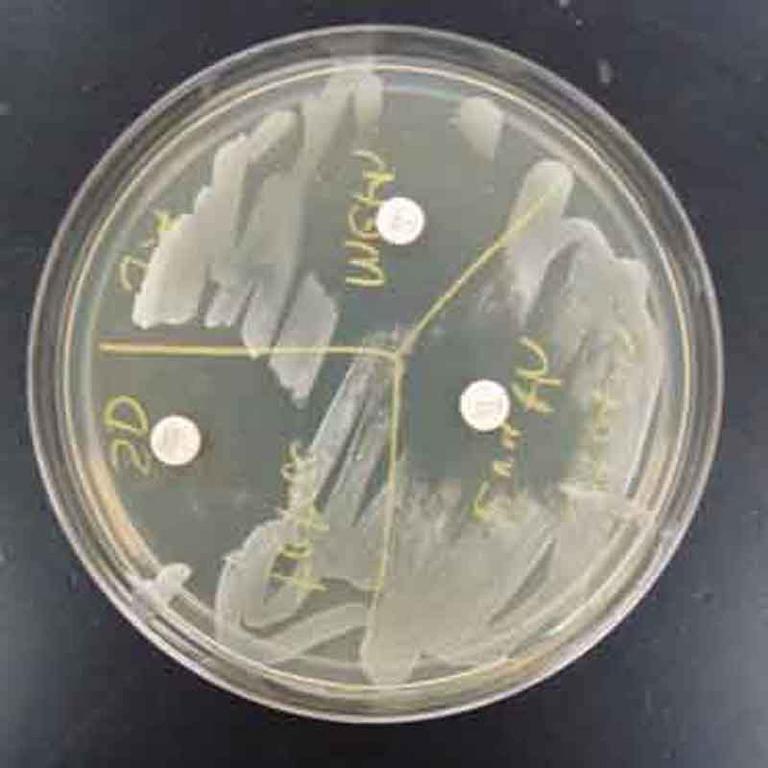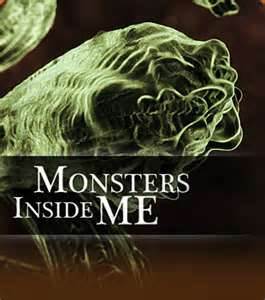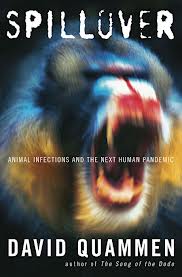 | ||||
Does Shark Professional Steam & Spray™ Steam Mop
Kill Bacteria on Floors? Experiments 2 & 3
Microbiology in the Home from Science Prof Online
As a college microbiology instructor, I teach a lab about
microbial control, how to kill microbes. There are various control methods available to students: physical (heat and UV radiation), antibiotics and chemical agents.
Article Summary: Many steam mops use both physical (heat) and chemical (cleaner) means to sanitize, and claim nearly 100% effectiveness. But how clean do steam mops really get floors? Here are the results of our second and third experiment to finding the best mopping technique for maximum floor sanitation. Great science experiment for home schooling or classroom use.
Does Shark PRO Steam & Spray™ Mop Kill Bacteria?
SPO VIRTUAL CLASSROOMS
 | ||||||
The students choose which they would like to use and then design and conduct an experiment.
One of my students tested how well the Shark® Light and Easy™ steam mop sanitized his kitchen floor and got very impressive results, so impressive that I bought my first steam mop that same day.
In contrast to the Shark Light & Easy, which uses only steam to clean and sanitize floors, I chose a model of steam mop that employed both steam (heat) and spray cleanser (chemicals), the Shark® PRO Steam and Spray™ Mop. Steam mops typically generate steam above 200 degrees Fahrenheit, a temperature that will kill most microbes. With the Shark Steam & Spray the use of steam requires that the mop is plugged in. The cleanser sprayer is battery operated, so can be operated regardless of whether the mop is plugged in.
The Shark Steam Energized™ cleanser comes with the mop, costs approximately $7 per 20 fl. oz. bottle separately, and makes no claims regarding sanitizing. This cleanser was used for all of our Shark® PRO Steam and Spray™ Mop experiments. However, as it is expensive, when cleaning my floors, I typically refill the bottle with my own cleaning solution (although doing so is, not surprisingly, against the manufacturer's recommendation).
The first sanitation experiment we ran with the Shark® PRO Steam and Spray™ Mop yielded excellent results, but still left bacteria on the floor. Therefore we decided to run additional tests, changing the mopping technique used.
Experiment 2a, 2b & 2c: Shark PRO Steam & Spray Mop
Experiment #2 Methods
In experiment #2, the steam mop was used to clean three adjacent dirty areas of kitchen floor in front of the stove. Each area to be cleaned was as wide as the mop head in a vertical 2 foot swipe. Cleaning was accomplished using 10 back-and-forth “swipes” (a total of 20 passes), each swipe lasting 1 second and releasing one burst of steam.
- 1. Separate sterile swabs were used to obtain "before cleaning" samples from each dirty area of floor and then plated on ½ of a TSY plate, ½ of a MacConkey's agar plate. An additional sample was swabbed from each area and plated on Mannitol Salt agar. [TSY is an all-purpose bacterial growth medium that will grow a wide variety of bacteria. MacConkey's (MAC) is a specialized bacterial growth medium that only grows Gram-negative bacteria and will indicate if coliform bacteria are present. Mannitol salt agar (MSA a.k.a. MANN) is also a specialized medium that grows only salt-loving bacteria like Gram positive Staphylococcus.]
- 2.
 The steam mop was run over the area to be cleaned in ten 1-second back-and-forth “swipes”, 20 passes over each section. A new, dry cleaning pad was used for each section of floor:
The steam mop was run over the area to be cleaned in ten 1-second back-and-forth “swipes”, 20 passes over each section. A new, dry cleaning pad was used for each section of floor:
a. In strip 2a, only steam was used, one burst of steam
In strip 2a, only steam was used, one burst of steam
each of the 10 times the mop was pushed forward.
b. In strip 2b, the steam was turned off and the cleaner
In strip 2b, the steam was turned off and the cleaner
sprayed 5x, every other time the mop moved forward.
c. In strip 2c, with the steam on, the cleaner was sprayed
In strip 2c, with the steam on, the cleaner was sprayed
5x, every other time the mop moved forward. Steam was released 10x, every time the mop moved forward.
- 3.
 The floor was allowed to dry.
The floor was allowed to dry.
- 4. Separate sterile swabs were used to sample each of the three cleaned areas of floor and each “after cleaning” sample was plated on the other ½ of a TSY agar plate and ½ of a MacConkey’s agar plate. Additional "after cleaning" swabbed samples were plated on Mannitol Salt.
- 5. The plates were left in a warm location for one week, then examined for growth.
Experiment #2 Results
For all three sections of floor, cleaning dramatically reduced the amount of bacteria present, however, the cleaning method expected to be mosts effective (steam and cleanser combined), was the LEAST effective. Cleanser alone worked best. Neither specialized media (MAC or MANN) had any growth before or after cleaning. Suggesting the absence of Gram-negative and halophilic bacteria on the kitchen floor. See photo and summary of results below.
Equipment used for Shark PRO Steam & Spray Mop Sanitation Experiment #2:
-sterile swabs
-3 TSY agar plates
-3 MacConkey's agar plates
3 Mannitol Salt agar plates
- permanent marker
Shark PRO Steam & Spray Sanitation Experiment #2 Results
"Before cleaning" floor samples plated on left side of all plates, "after cleaning" samples plated on right side of plates.
For all three experimental conditions, cleaning dramatically reduced the amount of bacteria on the floor, but, surprisingly, combined steam and cleanser was the least effective.
1
3
Experimental Conclusion
After trying three methods of mopping, detailed in the Shark® PRO Steam and Spray™ Mop Experiment #1,
Experiment #2 and Experiment #3, the following mopping technique resulted in complete elimination of microbes from the floor:
- STEP 1: Ten back and forth 1-second "swipes" over the area, steam is automatically released every time the mop moves forward. Sprayed cleanser every other time the mop moves forward (5x). This step cleans the dirty floor.
- STEP 2: Five additional, slow back and forth steam-only swipes, 2-seconds each way. This step helps to ensure the floor is sanitized.
I don't beleive it is essential to precisely duplicate this technique in order to get similar results. The key seems to be finishing each section by moving the mop slowly over the area, while steam is released.
Additional Microbial Control Resources
- Microbiology In the Home: Tips To Sanitize Your House and Keep Your Family Healthy, Household Microbiology article from Science Prof Online.
- Microbial Control Laboratory Exercise Main Page from the Virtual Microbiology Classroom.
- Shark® PRO Steam & Spray™ Steam Mop Official Page.
Experiment 3a, 3b and 3c: Shark PRO Steam & Spray Mop
Experiment #3 Methods
In an effort to identify the most effective method of steam mopping, another technique was tried. The steam mop was again used to clean three adjacent dirty areas of the kitchen floor in front of the stove. This was done more than a week after the floor was previously mopped. Each area of floor cleaned was as wide as the mop head in a vertical 2 foot swipe.
- 1.
 A separate sterile swab was used to sample each of the three dirty areas of floor and these “before cleaning” samples were then separately plated on the left ½ of a TSY plate. TSY was the only medium used in this experiment, as previous experiments showed no bacterial growth on the specialized media.
A separate sterile swab was used to sample each of the three dirty areas of floor and these “before cleaning” samples were then separately plated on the left ½ of a TSY plate. TSY was the only medium used in this experiment, as previous experiments showed no bacterial growth on the specialized media.
- 2.
 The steam mop was run over the area to be cleaned for a total of fifteen back-and-forth “swipes”, meaning 30 passes over each area to be cleaned. The first 10 swipes were 1-second each. The last 5 swipes were done slowly, at 2 seconds per swipe. A new, dry cleaning pad was used for each section of floor:
The steam mop was run over the area to be cleaned for a total of fifteen back-and-forth “swipes”, meaning 30 passes over each area to be cleaned. The first 10 swipes were 1-second each. The last 5 swipes were done slowly, at 2 seconds per swipe. A new, dry cleaning pad was used for each section of floor:
a. In strip 3a, only steam was used, one burst of steam
In strip 3a, only steam was used, one burst of steam
each of the 15 times the mop was pushed forward.
b. In strip 3b, the steam was turned off and the cleaner
In strip 3b, the steam was turned off and the cleaner
sprayed 5x, every other time the mop moved forward for the first 10 swipes, followed by 5 more swipes with
no cleanser sprayed.
c. In strip 3c, with the steam on, the cleaner was sprayed
In strip 3c, with the steam on, the cleaner was sprayed
5x, every other time the mop moved forward for the first
10 swipes. Then five additional, slow steam-only
swipes were done. Steam was released every time the mop moved forward (15x).
- 3.
 The floor was allowed to dry.
The floor was allowed to dry.
- 4. Separate sterile swabs were used to sample each of the three cleaned areas of the floor and the “after cleaning” samples were plated on the right ½ of the TSY agar plates.
- 5. The plates were left in a warm location for one week, then examined for growth.
Experiment #3 Results
For all three sections of floor, cleaning dramatically reduced the amount of bacteria. The mopping method using a combination of cleanser and steam resulted in NO GROWTH on the agar from the "after cleaning" sample!
Shark PRO Steam & Spray Sanitation Experiment #3 Results
"Before cleaning" floor samples plated on left side of plates, "after cleaning" samples plated on right side of plates.
For all three experimental conditions, cleaning dramatically reduced the amount of bacteria on the floor, and the use of both cleanser and steam resulted in the best sanitation, showing no bacterial growth on the "after cleaning" side.
< Yaay!
Safety Measures When Working With Live Bacteria
Please read this section carefully before carrying out the experiment outlined above. Although these plates will be growing bacteria present on hands, once the bacteria begin growing on the agar plates, they will be present in much higher numbers than a person would normally encounter. Therefore, there are some important safety precautions to keep in mind:
- Wear safety goggles and protective gloves when handling plates that are growing bacteria.
- Never open the plates after placing the sample on the agar. Bacteria will be present in large numbers. Some can become airborne and be breathed in or land on areas of the body close to an open plate.
- Keep plates out of the reach of small children and pets. Talk to children about these safety precautions and make sure they know not to ever handle the plates without adult supervision.
- You may place a rubber band around the plates to reduce the likelihood that they will accidentally fall open.
- The top of the refrigerator can be a good place to store incubating plates, as it is up high and usually a bit warm.
- Placing incubating plates in open plastic bag (so aerobic bacteria can get oxygen) is a good measure to keep them safer and reduce odor (bacteria are stinky).
- When the experiment is finished, and you are done with the plates, place them in a zipped up plastic bag (Zip-loc) in the trash. They will run out of food and water eventually and die, but not before generating a lot of stink.
Shark Steam & Spray
Experiment #1 Results
Original Shark® PRO Steam & Spray™ Mop Experiment #1 Design
In the original Shark® PRO Steam and Spray™ Mop Experiment #1, the mop was moved over each section of floor to be cleaned using five 1-second back-and-forth “swipes”, meaning 10 passes over the area to be cleaned.
ATTENTION!: Please see the section on Safety Measures for Working with Live Bacteria before attempting this experiment yourself!
SCIENCE PHOTOS
 | ||||||
ANOTHER HOME MICROBIOLOGY EXPERIMENT FROM SPO
TSY agar with sample from dirty dishes on top (note bacterial colonies that grew), and sample from cleaned dishes on bottom.
 | ||||
SCIENCE VIDEOS
VIDEO: How to Interpret MacConkey's Agar (MAC) Bacterial Growth Medium
Go to > Article on MacConkey's Agar
Explore different ways to kill bacteria (physical, chemical and antibiotic)
The Virtual Microbiology Classroom provides a wide range of FREE educational resources including PowerPoint Lectures, Study Guides, Review Questions and Practice Test Questions.
TV show, from Animal Planet, presenting case studies of people with parasitic infections. So interesting, you'll learn about parasitism without even trying!
Check out our FREE
Monsters Inside Me
Homework Assignments
- Spillover by Quammen
- Rabid by Wasik & Murphy
- The Viral Storm by Wolfe
- The Ghost Map by Johnson
- Missing Microbes by Blaser
- The Great Mortality by Kelly
-The Great Influenza by Berry
- Pandemics: What Everyone Needs to Know by Doherty
- Deadly Outbreaks by Levitt
- Microbe Hunters by De Kruif
- Wickett's Remedy by Goldberg
- The Dress Lodger by Holman
Page last updated 1/2016
See the first version of this experiment.
Three sections of floor were tested, one with steam only, one with cleanser only, and one with a combination of steam and cleanser. However, the method that should have yielded the best results (steam and cleanser together) still showed quite a bit of microbial growth after cleaning. See photo above.
 | ||||||
SPO is a FREE science education website. Donations are key in helping us provide this resource with fewer ads.
Please help!
(This donation link uses PayPal on a secure connection.)
Tami Port, MS
Chief Executive Nerd of Science Prof Online & College Biology Instructor
